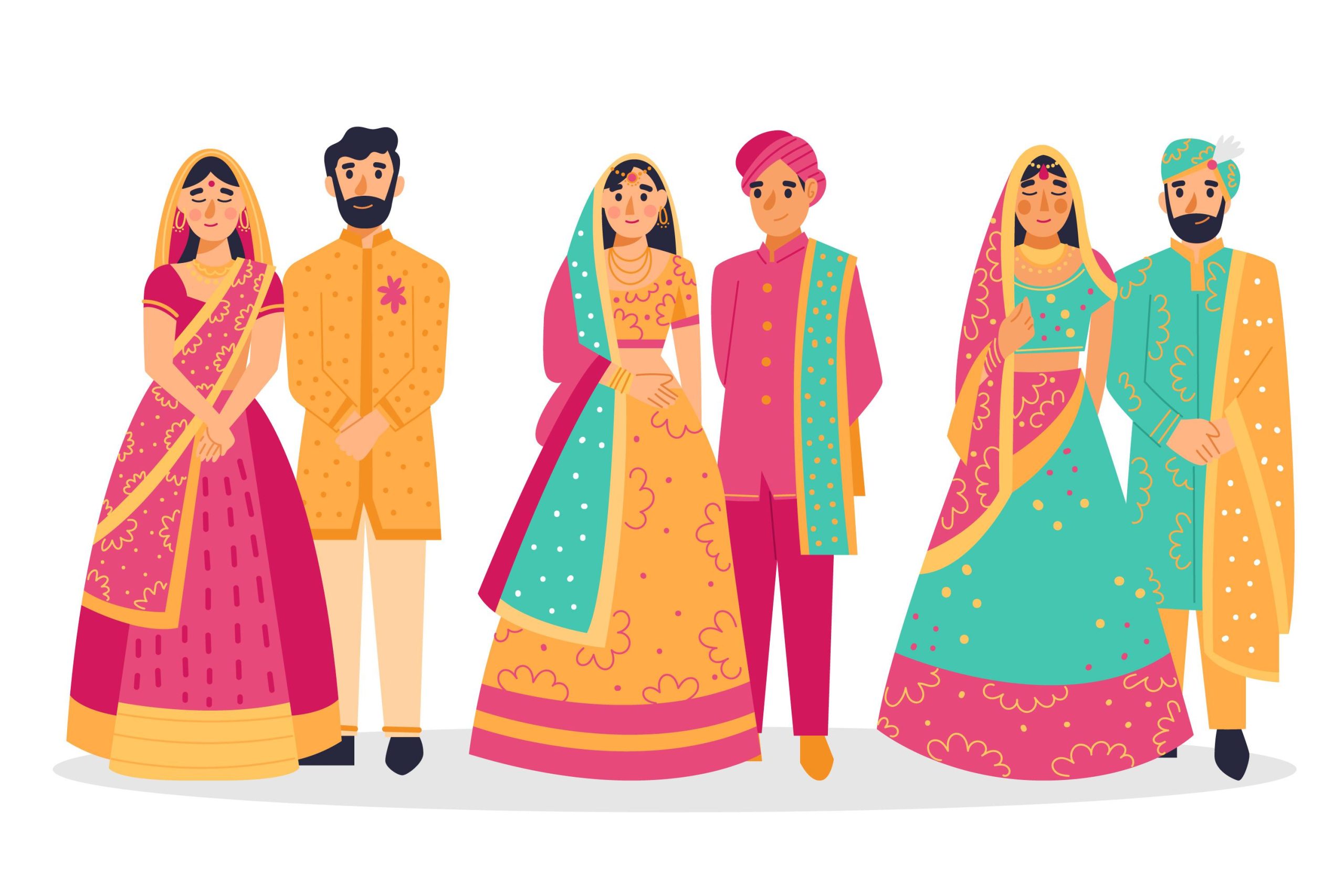Are you looking to buy lehenga online? It is easy to find one with online collection at Snapdeal. In terms of fit and silhouette, lehenga cholis are available in A-line, Straight cut, Umbrella cut, Fish cut, and Mermaid cut silhouettes.
However, after being stitched with primary fabrics such as cotton or silk in previous centuries, the lehenga is now much experimented with in terms of fabric. Satin, cotton blends, velvet, crepe, georgette, and other fabrics are now used to stitch lehengas. visit here
-
See the influence of the north and th south in one attire
Modern influences and global trends have also infiltrated and merged with the Lehenga. The lehenga style saree is one of the most recent Indian ethnic innovations that combine the saree and lehenga silhouettes into one.
The lower half is a ready-made sari with pleats, fall, and drapes reminiscent of a flared portrait of a lehenga, with a zip or has a knot at the waist side for adjustments.
The upper half of the attire must be tucked and wrapped around once, similar to a saree’s pallu. Another recent innovation in the Lehenga is the Anarkali Lehenga.
Ghagra cholis come in a variety of styles, including cotton chaniya cholis worn by women in Rajasthan and Gujarat, as well as party wear ghagra cholis stitched in georgette, crepe, or silk.
Why is wedding lehengas so beautiful?
Wedding ghagra cholis are embellished with beading, Swarovski crystals, rhinestones, Kundan, sequins, and other heavy embellishments in vibrant colours and patterns. Tie and dye ghagra cholis, as well as bead and mirror work lehenga cholis, are popular.
The Lehenga Dress is constantly being given a new avatar, from tailoring it in modern silhouettes to lending designer elements, urban motifs, and styles. Top designers such as Manish Malhotra, Sabyasachi Mukherjee, Anita Dongre, Anju Modi, and others have also gone ahead to give the Lehenga Choli a modern twist.
Lehengas are typically worn for very special occasions such as weddings, parties, and celebrations. However, depending on the amount of detail on the lehengas, it can be paired with ethnic jewellery such as Kundan, polka, meenakari, and so on.
Winter lehengas are made of fabrics such as brocade, velvet, satin, and silk. In the summer, lighter fabrics such as silk, georgette, and crepe can be worn. Because of the fabric options available, Lehenga can be worn all year round for climatic suitability.
-
Availability of various colours & fabrics in lehenga
It is said that due to the availability of various colours, fabrics, and embellishments, lehengas and ghagra cholis must be dry cleaned. To keep the metal decorations from tarnishing, store these outfits in a dry place wrapped in plastic or a clean white cloth. Dry-cleaning these outfits is the best way to keep them in good condition.
As a bridal gown, the lehenga is carefully stored and handled by women before and after the wedding. Because the bride must stand out from the rest of the dressed-up guests, her gown is the most heavily embellished. It is typical for it to weigh at least 10 kilogram’s. Therefore, it is usually only worn once.
Even though a lehenga is essentially a bridal gown, it is acceptable to wear it to regular parties and festivities. The design of the lehenga varies in this case, and it may not be as heavily embellished. Lehengas, for example, are worn by women of all ages.
-
Price ranges from nominal to higher range
When worn by young girls, however, the skirt can be paired with a halter-neck blouse or a backless choli. People simply change the design, colour, and embroidery of the ghagra to suit different occasions. The price of a bridal lehenga typically ranges from 5000 to 3-4 lakh rupees.
The lehenga choli is perhaps the most eye-catching of all ethnic Indian women’s attires. Though traditionally worn by women in rural Indian states such as Gujarat and Rajasthan, the lehenga choli is also popular as bridal attire in India’s urban areas. It is also referred to as Ghagra Choli. The traditional Indian bridal lehenga is red and heavily embroidered with gold thread or zari. It is paired with a choli, a short or waist-length blouse, and a dupatta.
-
Let’s learn about the dress
To get acquainted with the styles and galore of lehenga, things need to be highly recommended. They are as follows:
A three-piece Indian outfit is known as a lehenga choli. This outfit is very popular among the younger generation in India, and it is mostly worn on special occasions such as weddings and festivals. It consists of:
- The lehenga is a long Indian skirt.
- A choli is a form-fitting blouse with embroidery or embellishment.
- Dupatta – a long piece of cloth worn with the Lehengas and choli to add grace and elegance to the ensemble
When you choose a half saree, two contrast colours will blend together. Above the waist of a Half Saree or Lehenga Dress is similar to a regular saree with blouse and pallu, while below the waist is similar to a lehenga with fewer flares. Pallu is wrapped neatly around the waist, with the other end on the shoulder.
The difference between a Lehenga and a Half Saree is that a Lehengas has a choli or blouse paired with a Lehenga skirt with no pallu that is worn separately, whereas a Half Saree has a pallu that goes over the blouse paired with a skirt.
-
Culture blended in the dress
Lehengas are associated with North Indian culture, whereas half sarees are associated with South Indian culture. The drape pattern on both the lehenga and the half saree is very different, giving them completely different looks.
After the Mughals conquered India in the 10th century, the lehenga choli became popular among Indians. Since then, the Lehengas has evolved in terms of stitching style, embroidery, fabrics such as silk and brocade, and so on.
During the Mughal era, the Lehengas gradually became a royal attire. This royal attire is now more of a fashion statement than a standard outfit for most Indians. During the wedding season, we see elegant and precious Lehengas pop up on our Instagram feeds.
Conclusion
Even after Mughal rule ended in the early twentieth century, women across the country continued to wear Lehenga Choli. Because of the Mughal’s stronghold and influence on their culture, the style became more popular in Northern India.
Women wore Lehengas with different fabrics and patterns that were more appropriate for their cultural background, regardless of their social standing.








